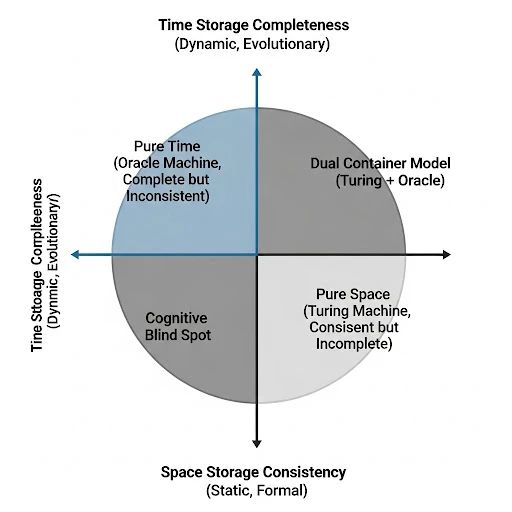
— A Unified Perspective from Wittgenstein to Turing
Wittgenstein said in Tractatus Logico-Philosophicus:
The world is the totality of facts, not of things.
This sentence actually implies two completely different “storage containers”:
Using Gödel’s metamathematics:
Conclusion: The capacity of the space container is far smaller than that of the time container.
Trying to use a static, formalized space structure to fully depict all facts in time is like using a finite model to hold infinite evolution — it is impossible.
In the history of human thought, many famous oppositions (reason vs. emotion, materialism vs. idealism, formalism vs. intuitionism, determinism vs. evolutionism) actually point to one core question:
Whether or not to include the time dimension in the axiomatic premise of analysis.
When you do not introduce time, the world is static, consistent, and formalizable;
Once you introduce time, the world becomes dynamic, uncertain, and difficult to be fully described by a closed system.
In two key papers, Turing precisely modeled the two types of storage containers:
Turing’s breakthrough was that he first attempted to construct the world using both time and space containers:
The world is a coupled system of time and space.
This also explains why more and more scientists and philosophers have realized:
You cannot use a static space model to encompass the entire dynamic world.
